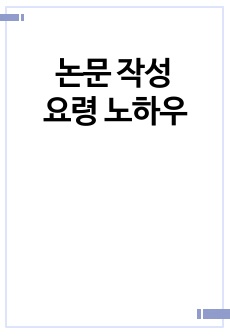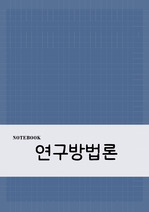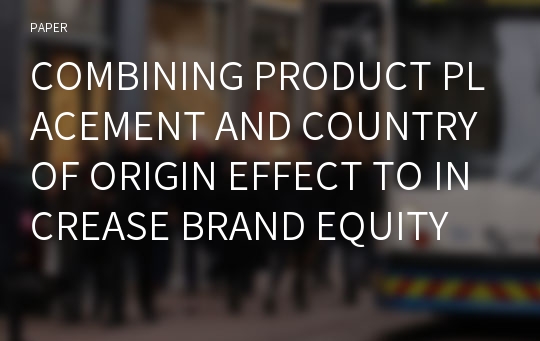COMBINING PRODUCT PLACEMENT AND COUNTRY OF ORIGIN EFFECT TO INCREASE BRAND EQUITY
* 본 문서는 배포용으로 복사 및 편집이 불가합니다.
서지정보
ㆍ발행기관 : 글로벌지식마케팅경영학회(GFMC)
ㆍ수록지정보 : GFMC Session1
ㆍ저자명 : Roberto Chierici, Maria Cristina Morra, Angelo Di Gregorio
ㆍ저자명 : Roberto Chierici, Maria Cristina Morra, Angelo Di Gregorio
영어 초록
In the years 2010–2012 in Italy, the 3F sectors, fashion, food and furniture, marked a +5% (FinanciaLounge, 2014). To some extent, this rise may rely on the strong Made in Italy label that is historically “perceived by consumers as being associated with “true” luxury goods” (Hoffmann & Coste-Manière, 2014) and, in order to create nostalgia and credibility for their brands, many firms try to correlate their offer to the heritage of the Country of Origin (Fionda & Moore, 2009).In the academic literature, Country of Origin is one of the most analyzed method to enhance a firm’s competitive advantage, mainly thanks to its ability to increase positive perceptions about firms’ products in the customers’ mind (Agrawal & Kamakura, 1999; Aiello et al., 2009). Moreover, Country of Origin is defined as “the effect rooted in consumers’ images of the quality of specific products marketed by firms associated with a country of origin” (Verlegh, Steenkamp, & Meulenberg, 2005, p. 127). COO works as an information cue that covers the attitudes toward the products evaluation. In particular, COO influences customers’ brand awareness, perceived quality and brand associations depending on the country image, and, as a consequence, the overall brand equity (Agrawal & Kamakura, 1999; Chao, 1998; Magnusson, Westjohn, & Zdravkovic, 2011). For instance, some authors showed a positive bias (i.e. increased willingness to pay a higher price) toward products from some countries relative to others (Drozdenko & Jensen, 2009). For this reason, just few countries can benefit from their image and awareness in order to take advantage from the Country of Origin effect, such as Italy. Furthermore, besides the Country image, scholars found that the COO effect can vary depending on the product category “For a given category, country-of-origin credibility is high when consumers have a favorable image of the country’s products in that category, and low when the product–country image is unfavorable” (Verlegh et al., 2005, p. 129). In this perspective, firms should identify solutions to convey positive associations about their supply to customers (Phau & Leng, 2008). The relevance of this issue is confirmed by a lot of studies, where some communication tools related to COO effect are already investigated, like brand identification system, packaging, advertising copy and celebrity endorsement (Agrawal & Kamakura, 1999; Usunier, 2011).
Actually, a lot of Italian firms use product placement exploiting the “Made in Italy” effect, where placement is here intended as the paid inclusion of branded products within mass media programming (Karrh, 1998). Just few examples are Piaggio with Vespa in Roman Holiday, Bacardi with Martini in James Bond and Ocean’s series, Riva Yacht with Aquarama in James Bond series and The Great Beauty, and Prada in The devil wears Prada.
Many reasons are explaining such a great use of product placement. On one hand, in the last decade we have assisted to the fragmentation of media and their audience, and on the other one, consumers are more and more skeptical towards traditional benefit advertising and they use technology to avoid commercials (Hackley & Tiwsakul, 2006; Lehu & Bressoud, 2009). Integrating brands casually but notably in a media content appears to be an interesting alternative to traditional marketing communication tools (D’Astous & Chartier, 2000). Furthermore, product placement’s acceptance and its possibly effectiveness, as well as country of origin effect, is likely to vary across product category (Gupta & Gould, 1997; Russell, 1998). Moreover, we can assume that product placement impact on the overall brand equity in a positive way (Aaker, 1997; Miniero, Chizzoli, & Pate, 2013) as it is an effective tool that can increase brand awareness and develop favorable relations with customers (Chan, 2012). In particular, studies on product placement confirm an increased top-of-mind-awareness and unaided awareness of placed brands (Cholinski, 2012). Finally, even if studies on product integration effect on attitude toward placed brands are not univocal, a lot of publications present positive or at the very least neutral product placement influence on brand attitude (Russell, 2002). For instance, according to Miniero et al. (2013), product placement is a nice way to achieve communication objectives and it can be used to influence consumers’ attitude and intention to buy a specific brand (Miniero et al., 2013).
To our knowledge, despite a huge employment of product placement in practice and a lot of contributions in the academic theory about these two topics, there is a gap in the literature about the relationship between the COO effect and the use of this communication tool from a practitioners’ perspective. On the contrary, from a consumers’ perspective, Tsai and Lu’s research find out a positive correlation between the use of product placement and the country image (Tsai & Lu, 2012). Moreover, due to the several studies concerning the positive impact of product placement and country of origin on brand equity, we are allowed to suppose that professionals can synergistically take advantage from both.
Starting from Karrh’s studies on the practitioners’ perspective about product placement, our research aspires to draw any analogy and difference between Karrh’s findings and the Italian firm’s perceptions (Karrh, McKee, & Pardun, 2003; Karrh, 1995, 1998). Particularly, we aim to interview companies that belong to sectors where Made in Italy represents a key competitive component. In addition, our study attempts to explore if and how independent Italian firms exploit country of origin effect in their product placement in order to increase their brand equity.
To answer our research questions, we could properly use the case study method (Yin, 2009). This qualitative methodology is very useful to explore unanticipated empirical discoveries (Eisenhardt, 1989). Our case study protocol will provide the analysis of three different data sources. In the first stage of our research, we will examine audio-visual materials, such as film, videotapes, websites and social media, to collect data in an unobtrusive method. In the second stage, we will go through public documents, newspapers and recent academic literature to understand trend topics on product placement and COO and to arrange guidelines suitable for the interviews. In the third ones, we will conduct in-depth face-to-face and semi-structured interviews with key figures of Made in Italy firms that integrated product placement in their communication mix at least once. More in details, interviews will be recorded and transcribed to ensure the completeness of the information gathered. Through the triangulation of these methods and sources we will achieve a richer and deeper data collection and we will also make the case study more detailed (Creswell, 2009).
Although our research is still in progress, we expect to extend Karrh’s findings about product placement. More in details, we would like to focus our attention upon the integration between COO and product placement and we try to highlight any key element that can explain how to manage this relationship in order to increase brand equity.
참고 자료
없음"GFMC Session1"의 다른 논문
 FAST AND SLOW FASHION BRANDS IN DEVELOPING SUSTAINABLE ..6페이지
FAST AND SLOW FASHION BRANDS IN DEVELOPING SUSTAINABLE ..6페이지 “WHAT IF A CELEBRITY AND A BRAND CO-CREATE A NEW COLLEC..7페이지
“WHAT IF A CELEBRITY AND A BRAND CO-CREATE A NEW COLLEC..7페이지 THE INSTAGRAM’S STRATEGY IN ENGAGING THE CUSTOMER’S LOY..3페이지
THE INSTAGRAM’S STRATEGY IN ENGAGING THE CUSTOMER’S LOY..3페이지 THE PARTICULARITIES OF NEW PRODUCT DEVELOPMENT IN THE T..5페이지
THE PARTICULARITIES OF NEW PRODUCT DEVELOPMENT IN THE T..5페이지 THE LONE CHOCOLATE BAR: THE INFLUENCE OF PERCEIVED SCAR..6페이지
THE LONE CHOCOLATE BAR: THE INFLUENCE OF PERCEIVED SCAR..6페이지 ADS AS WORKS OF ART: MEASURING ADVERTISING IMMERSION3페이지
ADS AS WORKS OF ART: MEASURING ADVERTISING IMMERSION3페이지 ECONOMIES OF SMALL: NICHE STRATEGIES AND SUCCESS FACTOR..8페이지
ECONOMIES OF SMALL: NICHE STRATEGIES AND SUCCESS FACTOR..8페이지 THE INFLUENCE OF ONLINE CUSTOMER REVIEWS ON RETAILERS' ..6페이지
THE INFLUENCE OF ONLINE CUSTOMER REVIEWS ON RETAILERS' ..6페이지 IS THE ARTIFICATION PROCESS PERCEIVED BY FINAL CONSUMER..6페이지
IS THE ARTIFICATION PROCESS PERCEIVED BY FINAL CONSUMER..6페이지 THE ODD EVEN PRICE PARADOX IN THE FASHION LUXURY SECTOR6페이지
THE ODD EVEN PRICE PARADOX IN THE FASHION LUXURY SECTOR6페이지





















